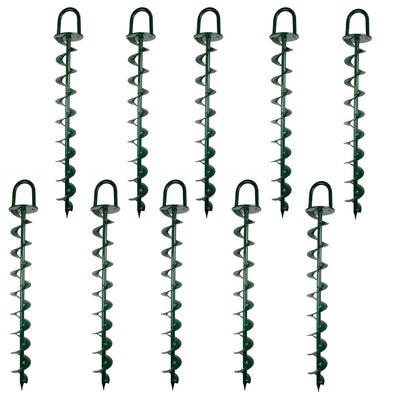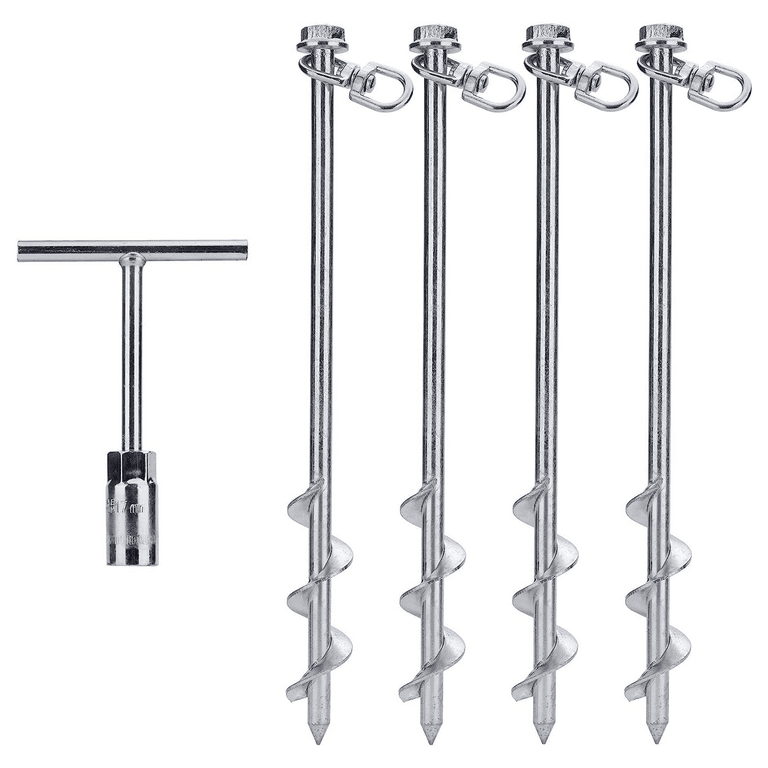Discover the Different Kinds of Ground Anchor for Your Following Task
When starting a building or landscape design job, comprehending the numerous kinds of ground supports available is critical to making certain both security and longevity (Ground Anchor). From auger supports, which excel in diverse dirt problems, to risk supports designed for short-term installations, the alternatives are various. Furthermore, concrete and screw anchors present distinct benefits in certain situations, while deadman supports are tailored for applications calling for resistance to lateral forces. The option of a proper anchor kind can considerably affect the total success of your job, prompting more exploration into their respective advantages and applications.

Auger Anchors
Auger anchors are a prominent selection in various building and landscaping jobs due to their unique style and effective anchoring abilities. These supports contain a helical screw-like shaft that is driven right into the ground, permitting a stable and safe hold. The spiral design facilitates very easy installment and makes the most of resistance against side pressures, making auger anchors specifically reliable in applications such as secure fencing, temporary frameworks, and disintegration control.
The installation process of auger supports is fairly simple. Auger anchors can be easily gotten rid of and reused, which includes to their cost-effectiveness and sustainability.
Among the substantial benefits of auger anchors is their capacity to distribute lots uniformly throughout the bordering dirt, lowering the risk of dirt disturbance and decreasing ecological effect. Additionally, they are less prone to loosening up or heaving over time contrasted to conventional securing approaches. Consequently, auger supports are an exceptional selection for projects requiring dependable and resilient anchoring services.

Stake Anchors
When it comes to safeguarding structures in a variety of exterior applications, risk supports provide a reputable and straightforward option. These anchors are commonly built from long lasting materials such as steel or light weight aluminum, designed to withstand environmental anxieties while offering ideal security. Their straightforward design permits fast setup, making them an optimal selection for short-lived or irreversible anchoring demands.
Risk anchors are particularly useful in safeguarding tents, covers, and various other light-weight structures versus wind and climate. They function by being driven into the ground at an angle, producing a strong hold that resists pull-out forces - Ground Anchor. The effectiveness of stake anchors relies on a number of aspects, consisting of dirt kind, wetness content, and the angle of installment
For included protection, many risk anchors include add-on factors for ropes or bands, permitting tension adjustments as needed. In applications such as landscaping or building and construction, they can effectively support equipment or structures on unequal terrain. On the whole, risk anchors offer a affordable and functional service for securing various outside setups, making them a favored selection for professionals and do it yourself lovers alike.
Concrete Anchors
Concrete anchors provide a robust option for safeguarding structures to concrete surfaces, guaranteeing stability and safety and security in numerous applications. These supports are important for jobs varying from household building and constructions to large commercial installments. They come in different kinds, consisting of growth supports, glue supports, and undercut supports, each created for specific tons demands and environmental conditions.
Glue anchors use high-strength epoxy or resin to bond the support to the concrete, supplying exceptional load-bearing capacities, specifically in cracked concrete situations. Undercut supports develop a special form within the concrete, offering phenomenal holding power, particularly in applications where tensile loads are prevalent.
When carried out appropriately, concrete supports dramatically enhance the structural stability of numerous projects, making them vital in modern building methods. Understanding the certain requirements of your project will assist in choosing the best kind of concrete support for the job.
Screw Anchors

Screw supports are a functional fastening option that can be try this effectively employed in a selection of applications where traditional concrete supports might not be enough. These anchors contain a helical layout that permits them to be quickly driven into the ground, making them ideal for usage in soil and other substratums. Their unique structure provides outstanding holding power and resistance to pull-out forces, making them ideal for numerous tasks, from landscape design to structural support.
Among the main advantages of screw anchors is their ease of installment. They need minimal equipment and can commonly be installed without the demand for excavation, which conserves both time and labor costs. Furthermore, screw anchors can be eliminated and recycled, offering a sustainable option for short-term applications.
Screw anchors are specifically advantageous in locations where dirt conditions are testing, such as loose or sandy dirts. Their capability to be mounted at varying depths enables modification based upon certain project needs. Generally, screw anchors supply a dependable and efficient anchoring technique, making them an excellent option for contractors and engineers seeking efficient remedies for their jobs.
Deadman Anchors
Deadman supports function as a durable solution for stabilizing frameworks in challenging conditions, particularly where standard anchoring methods may fall short. These anchors include large, hefty objects buried underground, which create resistance versus lateral forces. The design usually involves a horizontal element, such as a block of concrete or a metal plate, hidden in the dirt, to which bands or cords are affixed.
The performance of deadman anchors depends on their capacity to distribute loads over a larger area, lowering the danger of failure in unstable dirt problems. They are specifically valuable in applications such as maintaining walls, short-lived frameworks, and incline stabilization, where dirt movement can endanger the stability of the framework.
Setup of why not try this out deadman anchors calls for cautious preparation to ensure they are put at the appropriate deepness and positioning, maximizing their load-bearing capacity. While they may call for even more labor and material than lightweight supports, their integrity in unfavorable problems makes them indispensable for long-term jobs. Deadman anchors are flexible and can be adjusted to numerous applications, making them a best choice for designers dealing with distinct challenges in their projects.
Conclusion
Auger supports stand out in varied soil problems, while risk anchors suit short-term applications. For concrete surface areas, growth and sticky supports provide dependable alternatives, and screw supports provide adaptability in tough terrains.
Additionally, concrete and screw supports existing unique why not try here benefits in certain scenarios, while deadman anchors are customized for applications calling for resistance to lateral pressures - Ground Anchor.Auger supports are a prominent option in different construction and landscaping jobs due to their unique design and efficient anchoring capacities. They come in different types, including development supports, sticky anchors, and undercut anchors, each created for details load requirements and ecological conditions
Sticky anchors utilize high-strength epoxy or material to bond the support to the concrete, supplying superior load-bearing capacities, specifically in broken concrete scenarios. Overall, screw supports supply a efficient and reputable anchoring approach, making them an outstanding option for professionals and engineers looking for efficient services for their jobs.